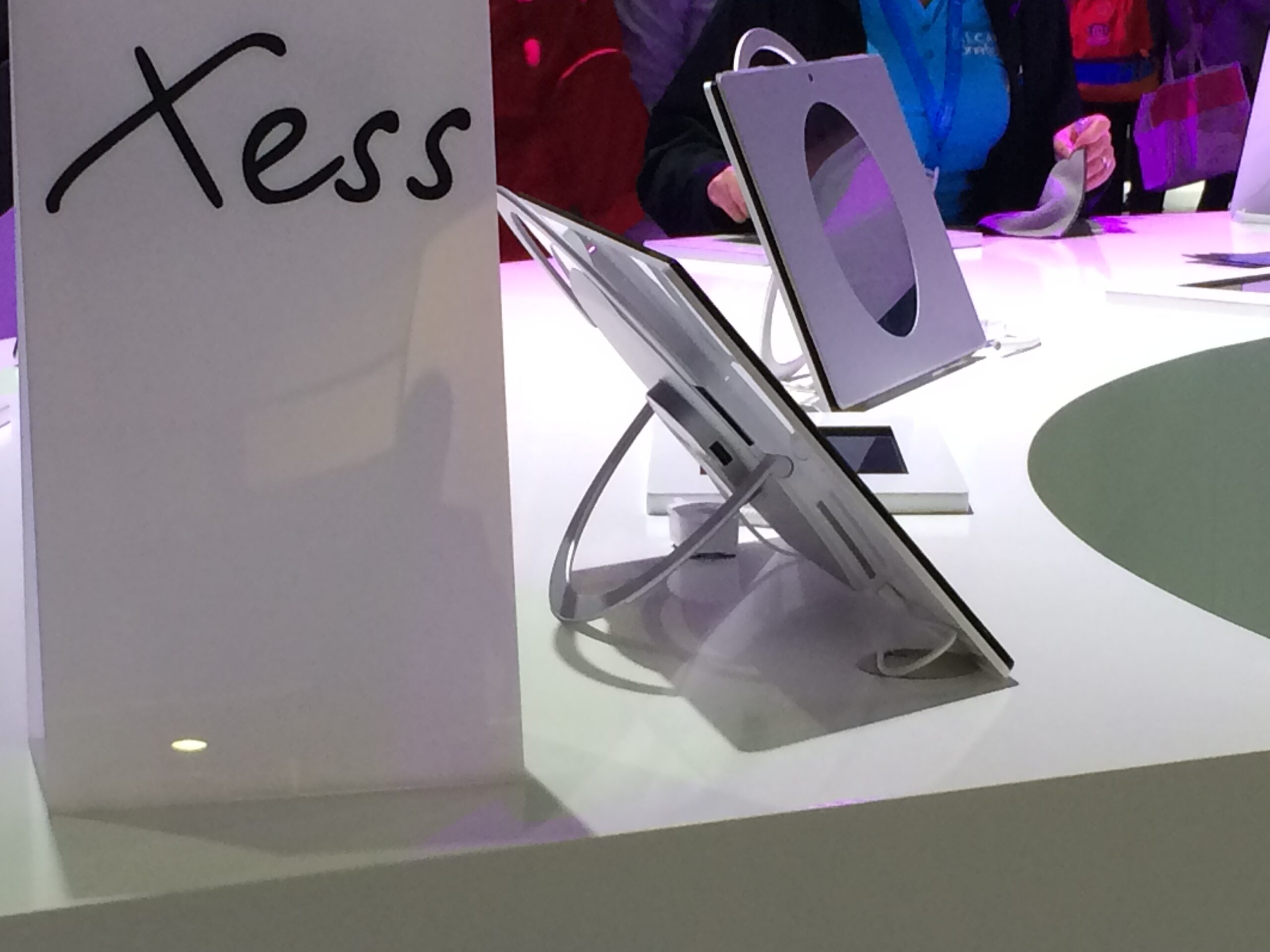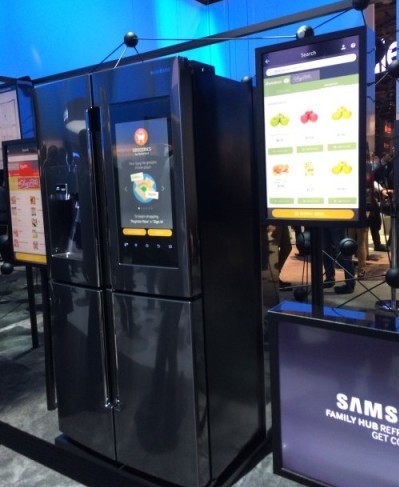My first experience on the CES show floor has had me fazed, what with the myriad of toys and gadgets that the Internet of Things has to offer, but amid the chaos one curious theme stood out to me. In our world of new media and television that’s often geared toward customizing experiences for the individual, and toward creating the on-the-go connectivity and entertainment most of us demand, the sense of family and community still remains strong, and innovators are managing to embed this key element into the devices and home appliances of the future.

Take Alcatel‘s new OneTouch tablet, Xess, also dubbed the family tablet, set to debut in the U.S. sometime mid-year through 2016. Much larger than a regular tablet with an LCD display measuring around 17 inches, Xess looks more like a portable small television flat screen. While quite handy for lugging around like a small briefcase, equipped with handles that also serve as a kick stand for the device, at first I didn’t see the point to it all. Why would I want to lug around this huge looking thing when I can easily get to my apps on my weightless iPad mini or my iPhone? Well, the customer service representatives explained that the device is meant for the home, for lugging in between rooms and for serving multiple purposes through its in-house apps–whether you want to look up recipes in the kitchen, watch movies in the living room, play games with the kids, or even take a family photo. (The camera responds to the flick of simple hand gestures, indicating that the people posing are ready for their photo to be taken–sending those self-timers on cameras to the grave.) But who cares, wouldn’t a device on-the-go serve all these same purposes? Well, no, because it’s not designed in the same way, as Xess’s size helps to make it a permanent fixture in the home as opposed to a transient personal device.
Jason Gerdon, the Sr. Manager of Communications for Alcatel OneTouch, explained that the difference lies in that iPads are for personal use, and the Xess is meant to be used and shared by everyone in the home. “The nucleus of the home starts in the kitchen, and goes from there,” he said. “The Xess serves as the hub where all pieces connect.” In other words, it’s designed to serve as that centralized place where home activities are streamlined through one device, making a shared entertainment experience among family members not only possible, but easy.
Acer also debuted a tablet geared towards families in a more compact 8-inch version. The Acer Iconia One 8 was actually designed to be easy for children to use, with a kid-friendly interface, apps offering games and books, and comes equipped with a set of parental controls. While not as sturdy, durable or necessarily meant to be used just in the home, the tablet’s most attractive feature is its low cost of $99. All of a sudden the idea of sharing the device with the sometimes destructive hands of little children doesn’t seem so bad, and might actually be a good way to start getting kids ready for that communal-connected lifestyle for when they’re a little bit older. (Perhaps preparing them to use products like the Xess in the future?)

In a similar fashion, Samsung‘s Family Hub Refrigerator aims to streamline family members’ communication using the kitchen as the “nucleus,” because, let’s face it, the kitchen is almost always the main draw in every home. Among its multiple features, the refrigerator boasts a 21.5-inch high-definition LCD touchscreen that displays messages sent while on the go from family members to remind mom or dad to pick up the kids at soccer practice, or to get milk on the way home, and thus the new post-it note is born. Calendars, photos, music, recipes all live on the family hub refrigerator.
As we move further into the new media economy, it’s interesting to see how devices of the future will navigate personalized experiences for customers while simultaneously honoring and carrying out communal and family-oriented manifestations. Just like how television has evolved into TV-on the-go yet still manages to maintain its ability to unite people with its myriad of programming and entertainment offerings, we’re seeing home appliances like refrigerators serve as the spot for people to converge and connect, and devices like tablets turn into the hub that the family home thrives on.








